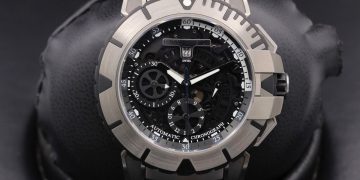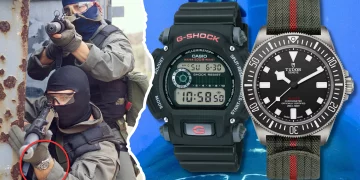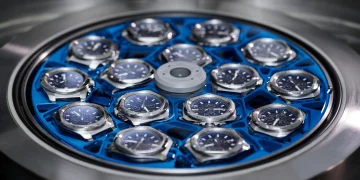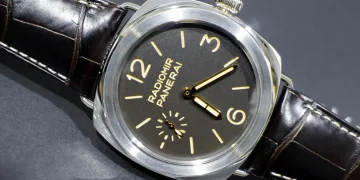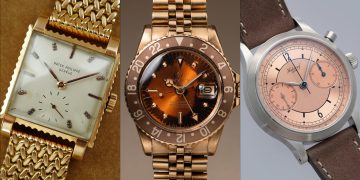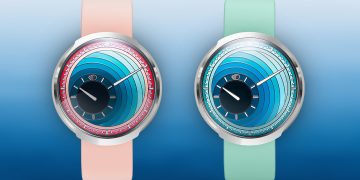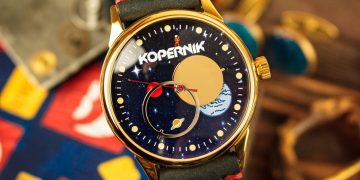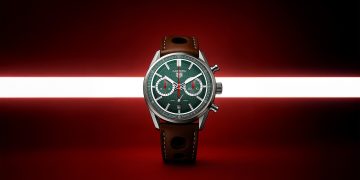The world of luxury watches is defined by a blend of precision, artistry, and innovation. Two of the most iconic timepieces in this space, the Omega Speedmaster and Rolex Submariner, have become benchmarks for what a fine watch should represent: incredible craftsmanship, durability, and technical prowess. But when comparing the two, one might wonder: How do the technological processes behind these legendary watches differ, and what innovations set them apart from each other?
In this article, we will explore the cutting-edge technologies that power the Omega Speedmaster and Rolex Submariner, comparing the movements, materials, and design philosophies that shape each watch. We’ll also dive into the engineering challenges faced by both brands, highlighting how their approaches to innovation have made them timeless pieces in the horological world.
1. The Origins and Legacy of the Omega Speedmaster and Rolex Submariner
Before diving into the technical details, it’s crucial to understand the origins of both watches and how their historical contexts influenced their design and technological development.
The Omega Speedmaster: A Watch Built for Precision
The Omega Speedmaster was introduced in 1957 as a high-performance chronograph. Initially designed for motorsport professionals, it quickly gained traction within the space and aerospace industries. The Speedmaster’s place in history was solidified when it became the first watch worn on the moon during the Apollo 11 mission. Since then, the Speedmaster has become synonymous with precision, adventure, and exploration.
The Rolex Submariner: A Revolutionary Dive Watch
The Rolex Submariner, introduced in 1953, was designed specifically as a diving tool. Its ability to withstand water pressure, along with its durable construction, made it an essential tool for professional divers. Over time, the Submariner evolved into a cultural icon, beloved by both divers and luxury watch enthusiasts alike. Its association with adventure and luxury made it one of the most sought-after timepieces in the world.
Both watches, though originating in different domains—motorsports and diving—are now regarded as benchmarks in the watch industry due to their technological advancements and legacy.
2. Movements: The Heart of Precision
At the core of any fine watch lies its movement, and both the Omega Speedmaster and Rolex Submariner utilize highly sophisticated calibers that reflect the technological expertise of their respective brands.
Omega Speedmaster’s Caliber 1861: The Legacy of Precision
The Omega Speedmaster has long been associated with its chronograph movement, the Caliber 1861, a manual winding movement that became legendary for its role in the Apollo missions. Here’s a closer look at its key features:
- Manual Winding Mechanism: The Speedmaster’s Caliber 1861 is a manual-winding chronograph movement. Watch enthusiasts appreciate manual movements for the traditional hands-on engagement required to wind the watch, creating a deeper connection between wearer and timepiece.
- Chronograph Functionality: The 1861 offers precision in timing, with the chronograph feature enabling users to measure elapsed time with remarkable accuracy. The 1861 movement features a small seconds hand, chronograph seconds hand, and a 30-minute counter to track short intervals of time. This capability is ideal for motorsports, space missions, and scientific endeavors.
- Performance and Durability: Known for its robustness and durability, the Caliber 1861 was tested in extreme conditions during the Apollo missions, ensuring that it could function accurately in the harshest environments.
Rolex Submariner’s Caliber 3135: A Movement of Luxury and Durability
The Rolex Submariner is powered by the Caliber 3135, an automatic movement that is widely regarded for its precision, longevity, and resilience. Key aspects of the movement include:
- Automatic Winding: Unlike the Omega Speedmaster, the Submariner features an automatic winding movement, meaning that it winds itself through the natural motion of the wearer’s wrist. The Perpetual rotor makes the movement incredibly convenient for everyday wearers, as it requires no manual winding.
- Chronometer Certification: The Caliber 3135 is a chronometer-certified movement, meaning it has passed the rigorous standards set by the Swiss Official Chronometer Testing Institute (COSC) for precision and accuracy. This certification guarantees that the watch will maintain an accuracy of within -4/+6 seconds per day.
- Date Function: The Submariner includes a date complication, and its Cyclops lens enhances legibility by magnifying the date for easy reading. This is particularly useful for users who require a date function in addition to timekeeping.
- Durability and Water Resistance: The 3135 movement is housed within a case that is water-resistant to 300 meters, providing unparalleled reliability in extreme conditions. Whether worn during deep-sea diving or daily use, the movement is designed to withstand pressure and shocks.
3. Materials and Craftsmanship: The Innovation Behind the Cases
The materials used in both watches play a vital role in their performance, durability, and overall appeal. Each brand has its own approach to the materials used in crafting their cases and components, setting the watches apart in terms of longevity and resistance to the elements.
Omega Speedmaster: Stainless Steel and Titanium
The Omega Speedmaster’s case is typically made of stainless steel, a material known for its corrosion resistance and sleek appearance. However, Omega has also experimented with other materials, such as titanium and ceramic, for different variations of the Speedmaster.
- Stainless Steel Case: The standard Speedmaster models use 316L stainless steel, a high-quality alloy that balances strength, resistance to rust, and a polished, professional finish. The durability of the stainless steel ensures that the watch can endure tough conditions while maintaining its aesthetic appeal.
- Titanium Case: Some Speedmaster models, like the Speedmaster X-33, feature titanium cases, which make the watch lighter and more resistant to scratches. Titanium is known for its high strength-to-weight ratio, making it an excellent choice for watches worn in more demanding environments.
- Ceramic Bezels: Omega also utilizes ceramic for the bezel inserts in certain Speedmaster models, offering enhanced scratch resistance and a sleek, modern appearance. Ceramic bezels are virtually impervious to fading, ensuring that the Speedmaster retains its beauty over time.
Rolex Submariner: Oystersteel and Cerachrom Bezel
Rolex has a reputation for using only the finest materials in its watches. The Rolex Submariner utilizes Oystersteel, a proprietary grade of stainless steel, and Cerachrom, a highly resistant ceramic material for its bezel. Here’s a closer look at these materials:
- Oystersteel: Rolex’s Oystersteel is a form of 904L stainless steel, which is more resistant to corrosion than the 316L steel commonly used in other watches. The higher nickel and chromium content in Oystersteel gives it a superior resistance to saltwater corrosion, making it an ideal material for dive watches.
- Cerachrom Bezel: The Cerachrom bezel insert used in the Submariner is a ceramic material that is virtually scratchproof and highly resistant to fading. The 60-minute unidirectional bezel is essential for divers to measure elapsed time underwater and is designed to be both functional and virtually indestructible.
- Yellow Rolesor and Other Precious Metals: For luxury models, Rolex also uses yellow gold or Rolesor (a combination of Oystersteel and gold) to add a touch of elegance to the Submariner. These precious metals ensure that the watch stands out not only in terms of performance but also in terms of luxury.

4. Water Resistance and Durability: Engineering for Extreme Conditions
Both the Speedmaster and Submariner have been engineered to withstand extreme conditions, though their specific design goals differ. The Submariner’s focus on diving and the Speedmaster’s association with space exploration and motorsports have driven their respective technological innovations.
Omega Speedmaster: Tested for Space and High-Performance Environments
- Pressure Resistance: While the Speedmaster is not specifically designed as a diving watch, it has undergone rigorous testing to ensure it could withstand extreme conditions. Its water resistance is generally rated to 50 meters, suitable for light water activities but not deep-sea diving.
- Temperature Resistance: The Speedmaster is built to withstand the extreme temperature variations that occur during space missions. The movement has been tested in environments ranging from freezing cold to extreme heat, ensuring that it functions accurately in virtually any condition.
Rolex Submariner: Built for Depths Beyond Ordinary
- Water Resistance: The Rolex Submariner is renowned for its 300-meter water resistance, allowing it to be used for professional diving. The screw-down crown and Triplock waterproofing system ensure that the watch remains sealed under water, even at significant depths.
- Helium Escape Valve: In some models, the Submariner is equipped with a helium escape valve, which allows any trapped helium gas to escape during decompression. This feature is critical for deep-sea divers who spend extended periods at extreme depths.
5. Innovation and Patents: How Omega and Rolex Push the Boundaries
Both Omega and Rolex are known for their groundbreaking innovations in watchmaking. From Omega’s Co-Axial escapement to Rolex’s Parachrom hairspring, both brands have contributed significantly to the advancement of watch technology.
- Omega’s Co-Axial Escapement: Omega developed the Co-Axial escapement, an innovation designed to reduce friction and improve the accuracy and longevity of the movement. This patented technology has been incorporated into the Speedmaster, ensuring better precision and longer intervals between servicing.
- Rolex’s Parachrom Hairspring: Rolex’s Parachrom hairspring is an anti-magnetic and shock-resistant innovation that allows the Submariner to maintain its accuracy in the face of external magnetic fields or physical shock. The Parachrom hairspring is one of Rolex’s most notable technical achievements.
Conclusion: The Technological Mastery of the Omega Speedmaster and Rolex Submariner
Both the Omega Speedmaster and Rolex Submariner represent the epitome of horological craftsmanship, blending historical legacy with cutting-edge technology. Whether it’s Omega’s precision chronograph or Rolex’s unmatched durability in extreme conditions, each watch has carved out its own niche in the world of luxury timepieces.
In this article, we’ve examined the core technological processes that define these two iconic watches. From the movement to the materials, the engineering behind the Speedmaster and Submariner is a testament to the innovation and expertise of their respective manufacturers. Whether you choose the Omega Speedmaster for its chronograph functionality or the Rolex Submariner for its robust dive capabilities, both watches offer technological excellence that has been refined over decades.
The legacy of the Speedmaster and Submariner continues to evolve, ensuring that these timepieces remain at the forefront of the watch industry for years to come.



